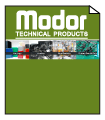
Today’s thermoplastics offer excellent electrical protection, improved thin-wall dimensional properties versus thermosets, and virtually zero emissions when melted. Thermoplastics’ excellent impact resistance, especially when dealing with thin-wall geometries, make them ideal when weight reduction is a critical consideration.
In the event that a thermoplastic is damaged or reaches the end of its lifecycle, they can be grinded back into raw materials without compromising physical properties. We test all thermoplastics using a combination of insulation testing, electrical breakdown testing, electrical current resistance and dimensional distortion testing to ensure performance and reliability.
Visit our Plastics Learning Center for more information on our inventory of thermoplastic polymers.
Thermoplastic Properties
Unlike thermoset plastics which undergo an irreversible chemical bond, thermoplastics can be remolded or reshaped without compromising impact resistance or toughness. Additional thermoplastic benefits include:
- Rapid manufacturing cycle times
- High product yields
- Highly recyclable
- Excellent finishing capabilities
- Reduced secondary operations
- High-impact resistance
- Remolding/reshaping capabilities
- Accurate color matching
- Eco-friendly manufacturing and virtually zero VOCs
Thermoplastic Examples
Thermoplastics are commonly used as encapsulation materials for high voltage electrical applications, including the insulation of coils and related components. Thermoplastics’ high recyclability also makes it the material of choice for everyday items such as shampoo bottles, packaging, compact discs and plastic bottles.
Contact a Modor Thermoplastics design engineer for more information.


